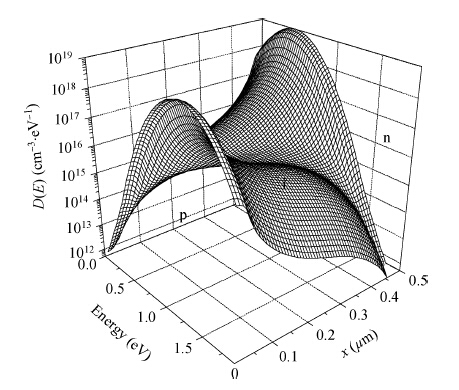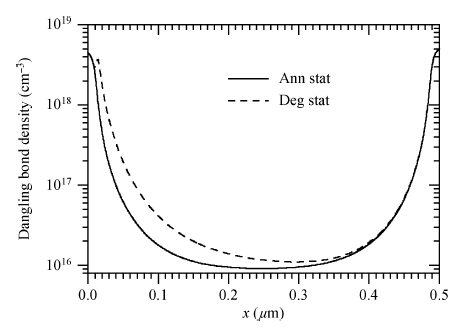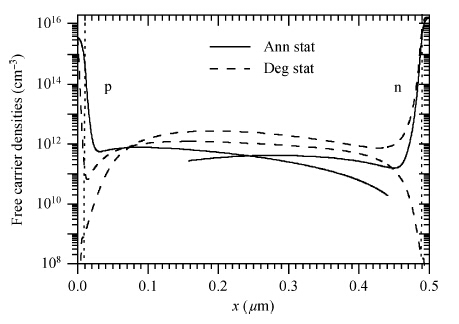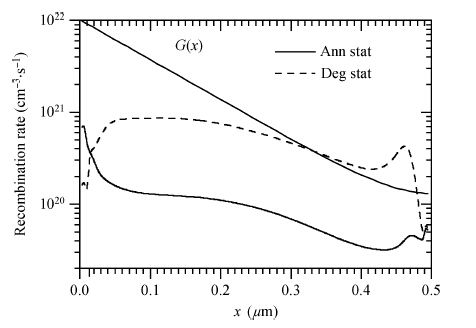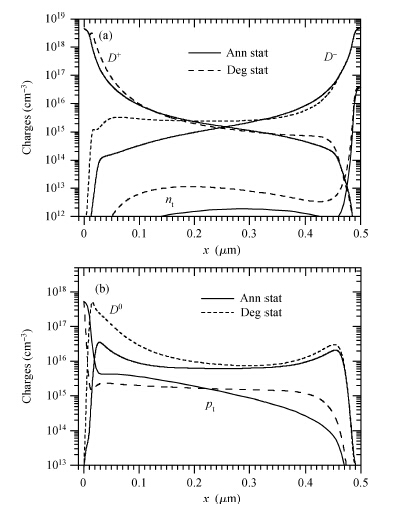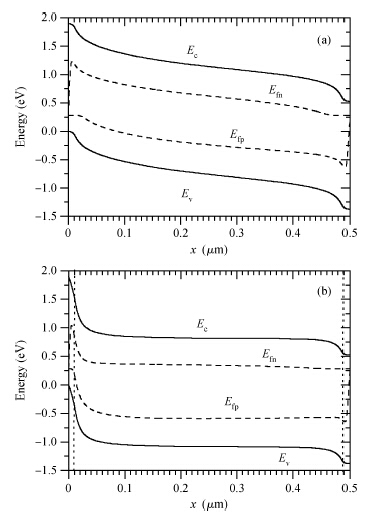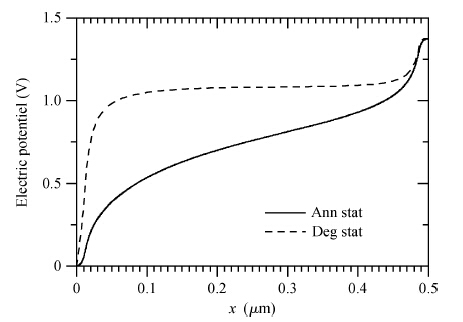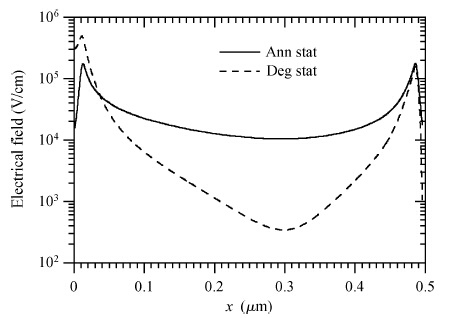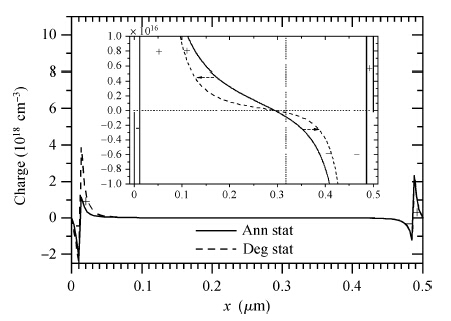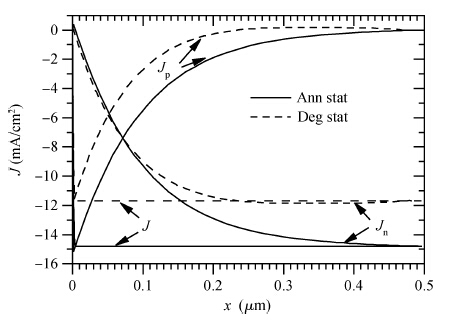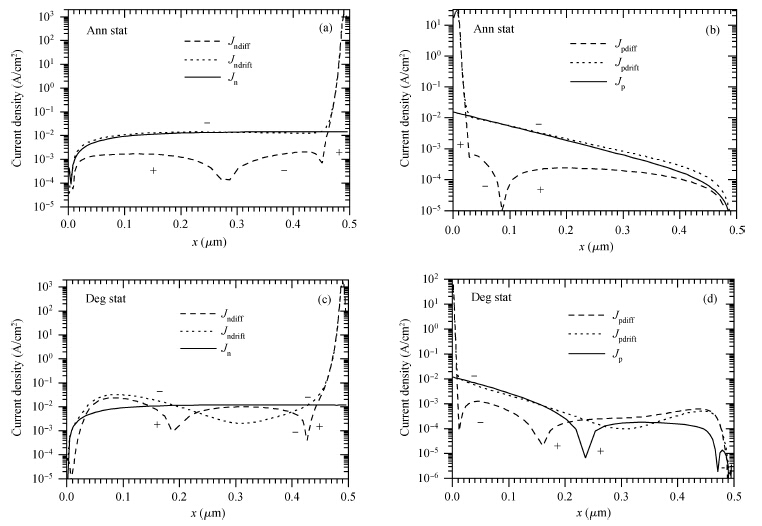| Citation: |
A. F. Bouhdjar, L. Ayat, AM. Meftah, N. Sengouga, AF. Meftah. Computer modelling and analysis of the photodegradation effect in a-Si:H p-i-n solar cell[J]. Journal of Semiconductors, 2015, 36(1): 014002. doi: 10.1088/1674-4926/36/1/014002
****
A. F. Bouhdjar, L. Ayat, AM. Meftah, N. Sengouga, AF. Meftah. Computer modelling and analysis of the photodegradation effect in a-Si:H p-i-n solar cell[J]. J. Semicond., 2015, 36(1): 014002. doi: 10.1088/1674-4926/36/1/014002.
|
Computer modelling and analysis of the photodegradation effect in a-Si:H p-i-n solar cell
DOI: 10.1088/1674-4926/36/1/014002
More Information
-
Abstract
Using a previous model, which was developed to describe the light-induced creation of the defect density in the a-Si:H gap states, we present in this work a numerical modelling of the photodegradation effect in the a-Si:H p-i-n solar cell under continuous illumination. We first considered the simple case of a monochromatic light beam with a wavelength λ between 530-540 nm non uniformly absorbed, then the global standard solar spectrum (AM 1.5) illumination is taken into account. The photodegradation is analysed on the basis of the resulting changes in the free carrier's densities, recombination rate, band structure, electrical potential and field, space charge, and current densities. Changes in the cell's external parameters: the open circuit voltage Voc, the short circuit current density Jsc, the fill factor FF and the maximum power density Pmax are also presented.-
Keywords:
- a-Si:H,
- Staebler-Wronski effect,
- p-i-n
-
References
[1] [2] [3] [4] [5] [6] [7] [8] [9] [10] [11] [12] [13] [14] [15] [16] [17] [18] [19] [20] [21] [22] [23] [24] [25] [26] [27] [28] -
Proportional views






 DownLoad:
DownLoad:
